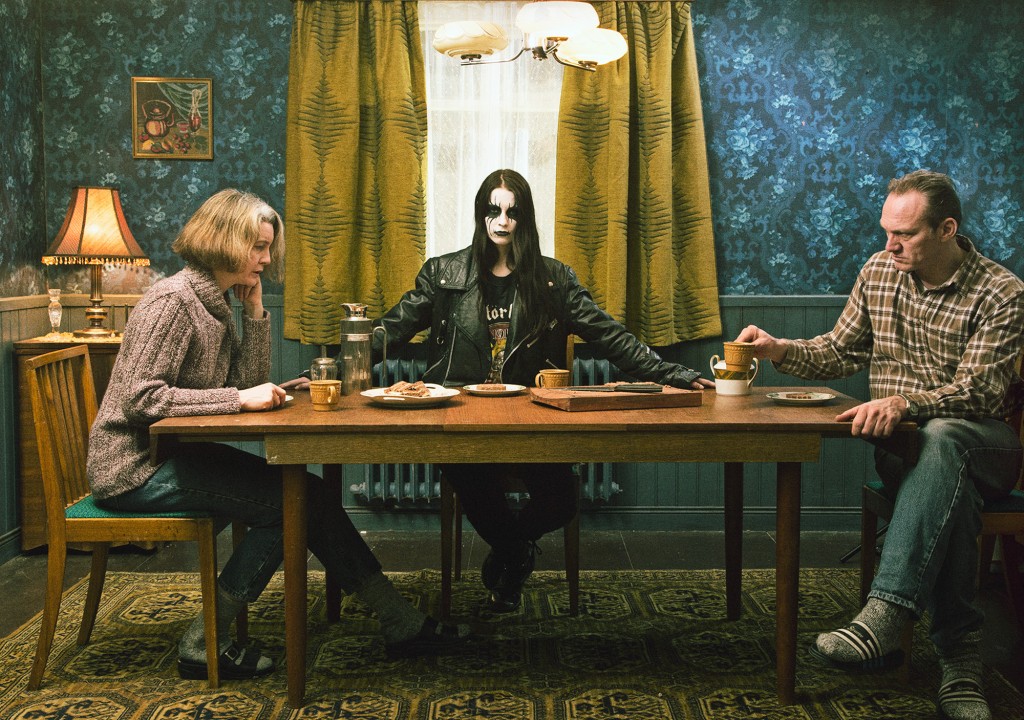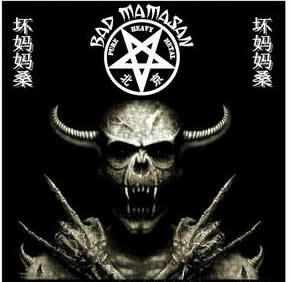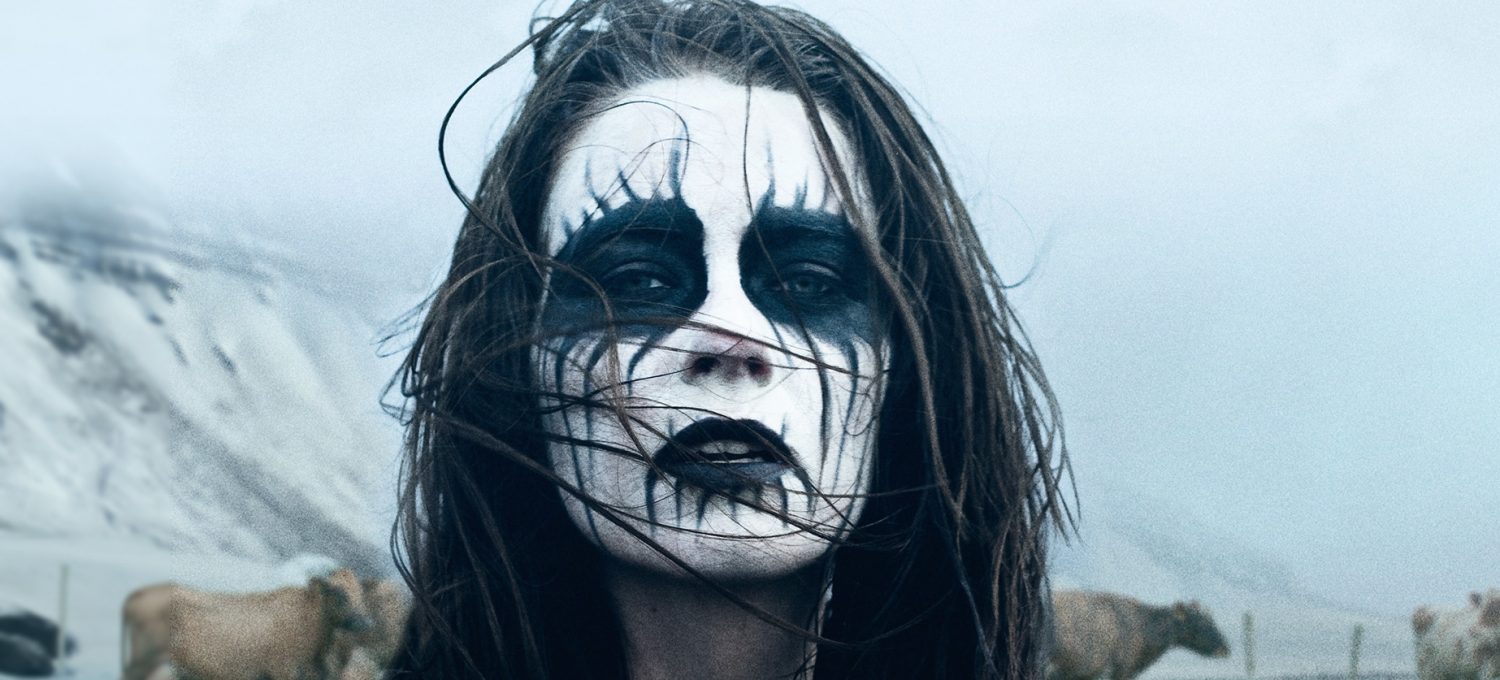
Metalhead, an Icelandic film written and directed by Ragnar Bragason, premiered in fall of 2013 at the Toronto International Film Festival, and is finally getting limited release in the United States, along with widespread Video on Demand starting April 3.
The film starts with a rural farm family experiencing a horrific loss. Their teenage son, Baldur, is killed in a tractor accident as his twelve year-old sister, Hera, watches. The family holds the funeral in the local Lutheran church. During the funeral, Hera looks at the crucifixes and the Jesus portrait above the altar and is disgusted. She runs out of the church, dons her brother’s black leather jacket and takes over his record collection, which is made up entirely of the dark and skeletal heavy metal of the early 80’s.
Hera decides to run away from home to the city—presumably Reykjavik—with her brother’s guitar in hand. An old gentleman at the bus stop asks her if she has nothing to keep her in the country. She shakes her head. But when the bus pulls away, she is still sitting on the bench, and nine years have passed. Now a young adult, she still hasn’t left.
The film is a study in how grief can overtake a family—mocking the idea of its moving in neat rhythms, cycles, or “stages.” Nearly a decade after the son’s death, Hera and her parents still move through life in a daze. Everything seems to bring back memories of that fateful day on the farm: A blot of ketchup on a plate, which reminds the mother of the color of blood, a neighbor’s tractor that Hera steals one night while drunk. And of course, the son’s room, which, with its Iron Maiden and AC/DC posters still intact, has become a shrine since his death.
The film is slow to unfold, in the Scandinavian style. The cinematography shares with Bergman the interplay of light and dark, but always with a preference for the scrim-filtered pale light of winter. The pacing gives you a kind of sick, pit-of-the stomach feeling, as Hera moves from one self-destructive act to another. At twenty-one, she is much too old to be acting out in teenage rebellion. (One evening she startles the family by showing up to the dinner table in black-eyed, KISS-style makeup.)
Change begins when Hera is confronted by the town’s new minister, Pastor Janus. She’s as prickly to him as to everyone else, until he reveals he’s a metal fan, too—a fellow traveler on the “Crazy Train.”
Hera insists Metal is “About reality. Death is real, war is real. It tells things like they really are without any sugarcoating.”
Pastor Janus seems to agree. “Sometimes God can be found in the dark,” he says.
Fittingly, Hera works in a slaughterhouse where they kill and dress sheep. If the crucifixes and portrait of Jesus don’t drive home the religious symbolism, the bleating of the lambs being led to slaughter should.
In fact, the livestock of the farming community act as a kind of Greek chorus in the film, pointing out both the absurdity of life and the desperation of these characters not to be lured docilely into the oblivion of the Icelandic winter night.
When Hera makes a demo tape of her own music in the family barn, she realizes when she plays it back that her father’s herd of milk cows are mooing in the background. Hera is delighted by the sound, and sends it off to some record labels. Later, she gets a visit from some fans from the Oslo Metal scene who’ve heard the demo and love the cow-rock, too. “This is the most evil-sounding, brutal music I’ve ever heard,” one of them says. It’s the highest compliment they could give her.
The townsfolk in the community, many of whom are also members of the local church, treat Hera and her family with profound decency as she lurches from one self-destructive act to another. Her final act of rebellion is one of violence against the whole community. Yet it is their ability to forgive that leads to healing.
This film says a lot about resurrection, although in a roundabout way. If you think about it, Jesus’ Resurrection was really a communal event. Except for Mary Magdalene’s moment in the garden with Jesus in the Gospel of John, he never appears to just one person after his death. And even in this extraordinary instant with Mary, he immediately tells her to go and spread the news to his brothers.
In our personal-salvation-obsessed American Christianity, we tend to portray the Resurrection as a singular, heroic act of God. But as much as anything, it was the restoration of a community, the circle being mended. Or, to put it in rock terms, getting the band back together.
The themes of forgiveness and restoration of community are central to Metalhead. They play out in the life of Hera’s family and in the circles of the church and townsfolk—and despite religion’s continued misunderstanding, in the freaky circles of Metal fandom. For some communities, a devil-horn sign with index finger and pinky extended is as good as a “Peace be with you.”

